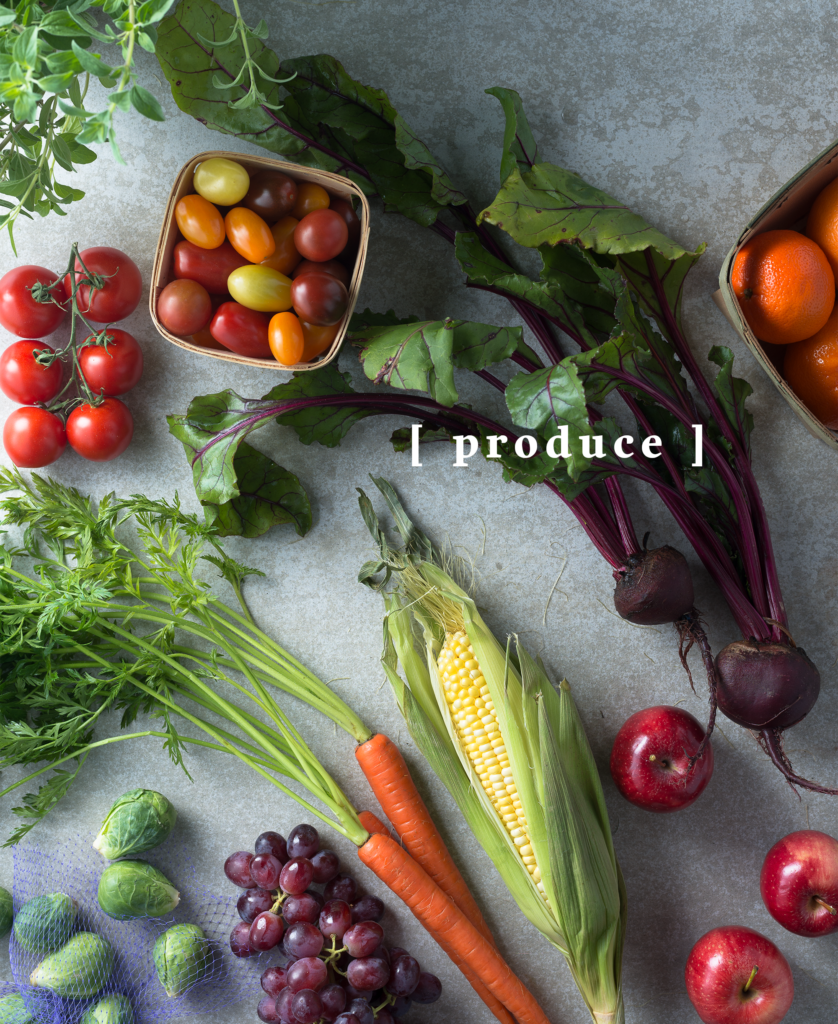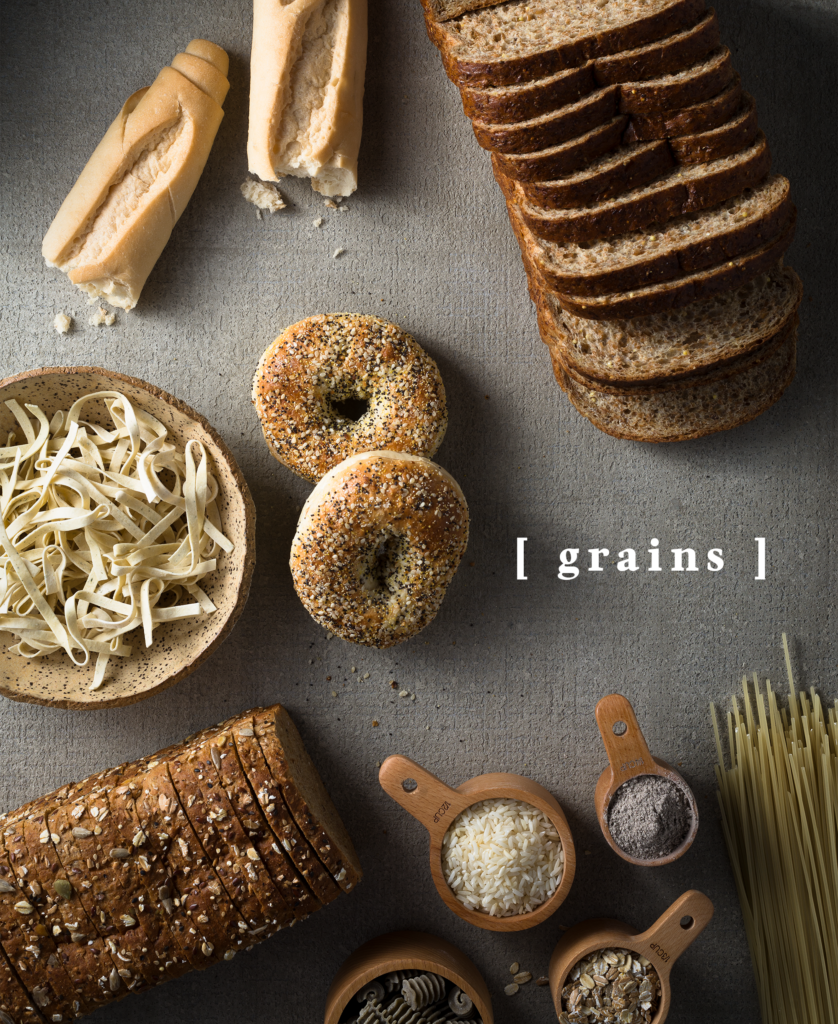Photography by Jason Stephens
Styled by Lisa Malott and Keila Rivera
Learning to eat healthy on a consistent basis is a journey, and it looks different for everyone. Every meal is an opportunity to feed yourself well and try something new. Take the time in 2019 to slow down, learn more about your food, and enjoy each bite you take.
Like most kids born in the ’90s, I was raised on the good stuff — mac n’ cheese, tuna fish sandwiches, and hot dogs. In high school, I was either eating bland salads and carrot sticks, or binging on greasy pizza and hot Cheetos. In my mind, there was no in-between. At the time, being healthy meant eating like a rabbit and depriving myself of any food that brought me joy.
Needless to say, it makes my heart very happy that we now live in a time when things like avocado toast and decadent lattes are a part of a happy and healthy lifestyle.
It wasn’t until I visited the island of Corsica, France, that I realized I was missing the mark when it came to being healthy. During my two-week vacation, we ate the most amazing, soul-filling foods. We would spend hours cooking and grazing on roasted meats, grilled vegetables, and funky cheeses, all while sipping on wine. I met a distant relative who was over 100 years old and still climbing a tall flight of stairs to her little home each day. Every meal was like experiencing real food for the very first time, and there was never a shortage of decadent treats or crusty bread. It’s an experience that I cherish
and intend on reliving again someday.

Look for the Certified Organic and Certified Humanely Raised labels. Organic chickens are fed only organic food and are required to have access to the outdoors. Certified humane farms have to provide a higher standard of living for their chickens from hatching to slaughter. Happier chickens are healthier chickens, which means a healthier you. Also, try a cut of meat that still contains the bones or skin. You’ll save money and notice a big difference in juiciness and flavor!
By the time I arrived back to the States, something in me had clicked. It was so refreshing to see that I didn’t need to deprive myself of tasty food in order to treat my body right. In fact, I had seen that food could bring joy and bliss and also fuel your body with excellent nutrition. So I dove into the health food scene and learned all that I could. I read labels and looked up ingredients, and watched way too many Netflix documentaries. And in the end, I discovered that cooking at home with ingredients you name and recognize is the best way to feed your body well.
It’s important to listen to your body and discover what works for you. No one specific way of eating works for everyone, because all of our bodies are so different. So have no fear — you will not have to throw out everything in your pantry in order to start eating healthy! All it takes is making small steps towards buying better and slowly cultivating a positive mindset around eating foods that make you feel good. Shopping healthy this year can be an opportunity for you to get creative, learn something new, and simplify your life.

Organic produce isn’t always available or affordable, so buy where it counts. When you’re planning to consume the outer layer of a fruit or vegetable, try to avoid pesticides that are typically found on tomatoes, grapes, potatoes, berries, and spinach. If you can’t peel and discard the outside, like a banana or avocado, then look for organic. Otherwise, shop local! Buying what’s in season means your produce will be fresh.
01. Plan your meals before you hit the grocery store.
You know all those Pinterest boards that are full of beautiful, colorful recipes that you’ve been hoarding for years? It is time to set down the bowl of ramen noodles and put them to use! If you want to successfully shop healthy, you have to plan ahead. Otherwise, you end up grabbing a bunch of ingredients that you’ll never use, because you have no idea what to do with them. Just as importantly, you want to plan meals that are fun and flavorful, but also practical for a busy schedule. Nobody has time to spend three hours cooking dinner every night. But you also don’t want everything to be so simple that you get bored and ditch those recipes for the drive-thru.
One of the ways I do that is by picking one fun new recipe to try out each week. Sometimes that means preparing a cheesy vegetable quiche that I can quickly heat up for breakfast each morning. Or baking a spicy eggplant shakshuka for dinner one night and trying to nail that perfect runny yolk. Pick one recipe each week that takes a little longer to prepare but that will make eating healthy fun and adventurous. Then balance that out with other meal ideas that are faster and simpler to make. And try using shortcuts that are still healthy, like buying rotisserie chicken to shred up for homemade burrito bowls. Small substitutions like that can save you tons of time and help keep you on track.
For lunches, I stick to the classic combination of meat, carb, and vegetable. For example, plan to bake a batch of sweet potatoes, roasted broccoli, and shredded beef to portion out for the week. Spice things up a bit with seasonings and herbs that bump up the flavors of your meals. Making sauces at home is another amazing way to switch up your meal prep while also avoiding all the preservatives and sugars that are often found in store-bought sauces. That’s the key — make it fun, make it flavorful, but don’t overwhelm yourself.

Grains like corn and wheat are sprayed heavily with pesticides, which have been proven to be harmful to our bodies and brains. Organic farms are strictly regulated, and the difference in their products and your health is significant. Next time you need some hearty grains, try out quinoa or wild rice. They’re higher in protein than regular rice and have a nutty flavor. Or try pasta that’s made with red lentils. It’s fun to mix things up, and you’ll be surprised how tasty it is!
02. Make a grocery list and STICK TO IT.
You’ve got a perfectly balanced menu of meals planned for the week, so now it’s time to build a grocery list. Go through each recipe and make a list of the ingredients that you don’t already have at home. Then, when you get to the store, STICK TO YOUR LIST. But what about those BOGO Oreos or that really great coupon you have for Ben & Jerry’s ice cream? Friends, staying committed to your grocery list will not only help you avoid buying the junk you’re trying to avoid, but it will also save you tons of money in the long run. Shopping healthy is already looking easier!
03. Shop the outer aisles.
You may have heard this before, but it’s one of the best tips for shopping healthy. Take a walk around the grocery store and you’ll notice that fresh items aren’t kept in those middle aisles. The produce, meats, and even the deli and bakery are all located on the outer walls of each store. Staying away from the inner aisles can help you avoid a lot of temptation and keep you focused on the ingredients you’ve already made plans to use.
Of course, there are exceptions to this rule. I personally love crunchy and salty snacks, and I don’t think life should be lived without those foods that bring you genuine joy. So instead of heading for the potato chips, try grabbing a big bag of popcorn kernels. Go old school and pop them yourself on the stove in coconut oil, and sprinkle with sea salt and a little granulated garlic while warm. You’ll be surprised how little things like this can be super satisfying and end up saving you money, too.

Wild-caught seafood should always be a priority. We do live in Florida, after all! There’s no reason to buy farm-raised seafood when we have access to fresh, beautiful seafood all year long. Did you know that salmon gets its color naturally from the krill and plankton that it eats in the ocean? Farm-raised salmon is fed kibble, so the flesh turns out grey. Farmers use pigmenting supplements or dyes to make sure the salmon turns pink before hitting shelves. Yikes. So next time you’re picking up seafood, get wild-caught. Fresh, never frozen fillets are always a better option, too. The difference in taste and texture is well worth it!
04. Read labels before you buy.
This can be one of the most intimidating parts of shopping healthy, especially when you’re just getting started. You pick up one box to read the label and you’re faced with an ingredient list that’s a mile long and essentially unrecognizable.
Here are a few simple tips to help you avoid the junk and select better options when you do need something from those inner aisles of the grocery store.
-Avoid long ingredient lists.The longer the list, the less likely it is that all the ingredients are quality. Of course, there are exceptions, like when you buy a mix that contains 10 different types of roasted nuts. But for the most part, high-quality and healthy foods contain much fewer ingredients.
“Natural” doesn’t always mean natural. Believe it or not, companies can use this word on their packaging freely. Although the USDA has a loose definition for what the term “natural” means, no inspections are conducted and food producers are not required to hold any sort of certification in order to use this term on their products. As a consumer, that can be really frustrating. But awareness and education are the best ways we can improve our food choices!
-Avoid high fructose corn syrup (and other processed sugars). This additive is chemically made in a lab and is a cheap alternative to sugar that was created when the government imposed sugar taxes in the ’70s. It’s also a major contributor to the rise in Adolescent Type 2 Diabetes and Metabolic Syndrome, which can cause high blood sugar, high blood pressure, and an increased risk of heart attack and stroke. Yikes.
-Look things up. If you can’t read it or pronounce it, it’s probably a hidden form of preservative, sugar, or filler. Take a quick picture of the ingredient list when you’re at the store, and do some research when you get home. What you learn might surprise you (or scare you!). On the other hand, remember the first time you saw the word “quinoa”? Sometimes a product or ingredient might look foreign, but it’s totally normal! You don’t always want to avoid something just because you aren’t sure what it is. Do your research and enjoy the journey of learning more about the foods you eat.
